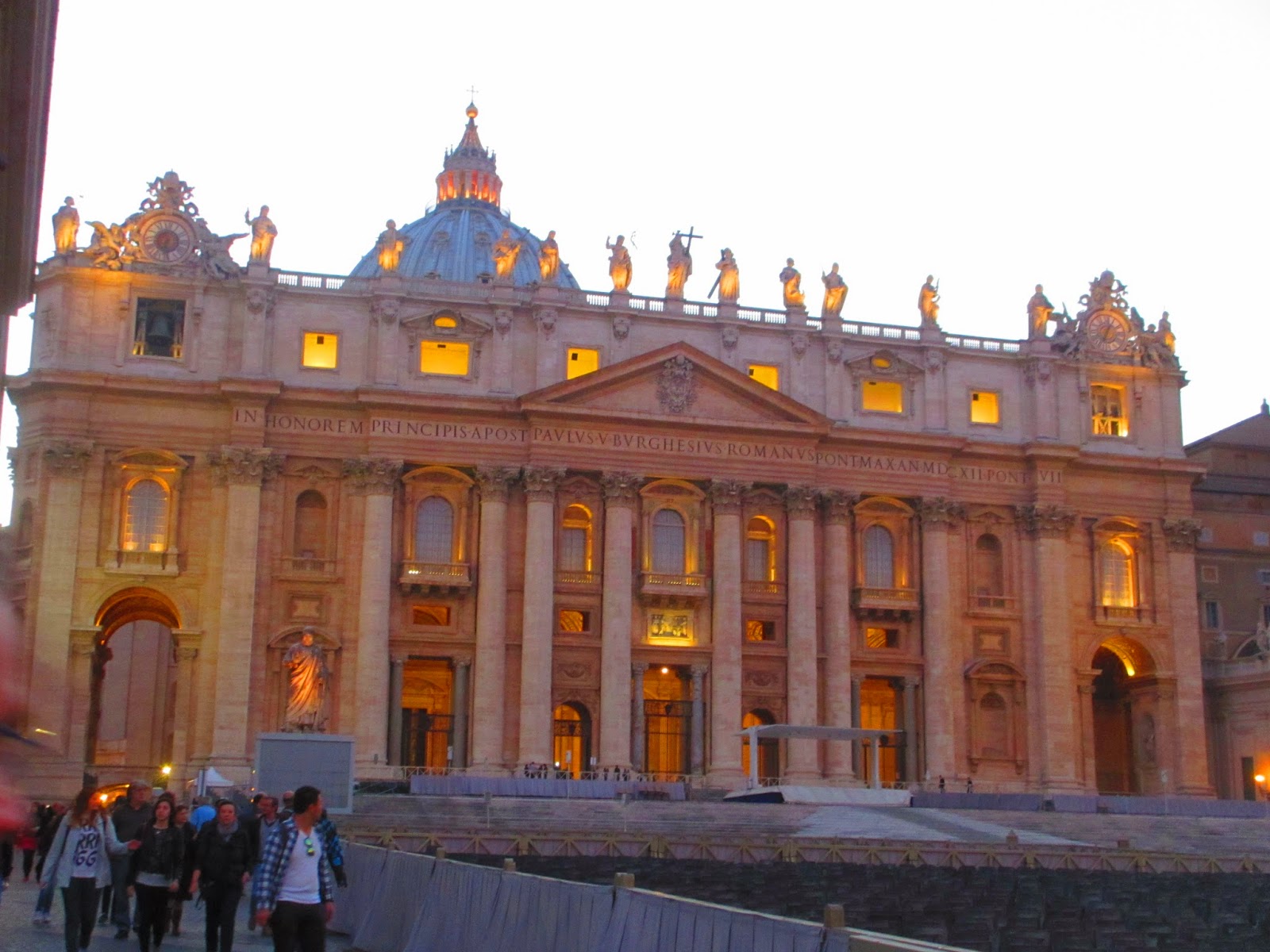Travelling = Peace of mind Relax your body Direction you are heading in life Start all over again!
Saturday, March 22, 2014
#Italy #Rome #Day 9
#Italy #Rome #Day 8
We bought some famous local product here such as the "onion ring“ and biscuit for wine.
Our next stop is Trastevere.
Story of the colosseum
For a thousand years, Rome ruled the known world, and the political, religious, and social center of this vast empire was a 5-acre patch of land known as the Forum
The games began in the morning with a few warm-up acts. First came the animals, things like watching dogs bloody themselves attacking porcupines. Or you'd see hunters prowling through fake forests in search of prey. Or wild animals were sic-ed on exotic human "animals," like dark-skinned chieftains captured from the so-called “barbarian” lands. The Colosseum's menagerie of beasts came from all over the empire, and were a sight in themselves: lions, tigers, and bears (Oh my!), crocodiles, elephants, rhinos, and hippos. (Hippos?) Yes…now you can go.
The animals were kept in cages beneath the arena floor. Looking down, you can see the maze of passageways. This was like the "backstage" for the games. Here, workers prepared the animals, gladiators warmed up, and prisoners said their final prayers. It's also where stagehands readied the scenery, set pieces, weapons, and props for the elaborate spectacles.
At just the right moment, workers down below would hoist an animal up in an elevator, through a trap door in the arena floor. The animal would pop out from behind a blind into the arena — the hunter didn’t know where, when, or by what he’d be attacked. (This brought howls of laughter from the hardened fans in the cheap seats who had a better view of the action.) Nets ringed the arena to protect the crowd.
At lunchtime came Act Two. This is when criminals and p.o.w.'s were executed, often in creative ways. They might be thrown to the lions — naked and unarmed. Or they were dressed up like classical heroes and forced to star in a play featuring their own death. The arena would be decorated with fake scenery, buildings, or foliage, brought up from the passages below. Then the star wandered onstage, dressed as, say, Hercules or Adonis. There he was attacked by wild animals or by gladiators in costume, who'd kill him in the same way the legendary hero died.
Between rounds, fans were treated to palate-cleansing gimmicks, like female gladiators fighting each other, or a dwarf battling a one-legged man. Clowns, jugglers, and circus performers provided more comic relief.
Finally, in the afternoon, came the main event — the gladiators. These warriors had their own martial specialties. Some carried swords, protected only with a shield and a heavy helmet. Some threw the javelin. Others represented fighting fishermen, with a net to snare opponents and a trident to spear them.
If a gladiator fell helpless to the ground, his opponent would approach the emperor’s box and ask: Should he live or should he die? Sometimes the emperor or master of ceremonies left the decision to the crowd, who would judge based on how valiantly the man had fought. They would make their decision — thumbs-up or thumbs-down. (Scholars, however, debate exactly what gesture meant what.) The Romans thought nothing of condemning a coward to the death he deserved. After a gladiator was killed, a man dressed up like Charon — the Grim Reaper of Roman mythology — entered the arena and dragged the lifeless body away.
#Italy #Rome #Day 7
The highlight of it is the The Sistine Chapel
#Italy #Pisa #Day 6
#Italy #Florence #Day 5
While Cindy and I wandered around the Accademia, the others went to checked in the luggage. Then, we celebrated Rachel's birthday!Pizza feast!
#Italy #Venice #Day 4
focus on what she is holding! Carciofi!A- muz-try food!
Our next stop is Murano city.
Murano is known for its glass worldwide. Besides that, there is not much else you need to buy besides the normal tourist objects, such as postcards and other souvenirs.Many souvenir shops try to pass off cheap Chinese counterfeit glass as real Murano glass.
#Italy #Venice #Day 3
We had our own time wondering around, taking photos, enjoying good food and all.




















































